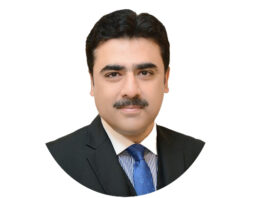Domestic abuse, also known as domestic violence, happens when someone in a relationship tries to control and gain power over their partner. It can be through physical, sexual, emotional, economic, or psychological actions that scare, hurt, or manipulate the other person.
In the heart of Pakistan’s cultural realm, the province of Sindh has long been a bedrock of civilization, boasting a rich heritage and history. However, beneath the colorful mosaic of its cultural tapestry lies a harsh and silent epidemic—domestic violence against women.
The year 2023 paints a disheartening picture for Sindh as it grapples with a surge in reported cases of violence against women. A staggering 771 cases have been reported in just the first four months, according to figures disclosed by the Sustainable Social Development Organization (SSDO). Alarming as these numbers are, they may only scratch the surface due to social stigmas surrounding reporting such incidents. The reported cases include 529 instances of women being kidnapped, 119 cases of domestic violence, 56 cases of rape, and 37 cases of honor killing—each representing a violation of fundamental human rights.
Examining the data more closely reveals hotspots in Karachi Central, Hyderabad, and Keamari, pointing to a systemic issue beyond isolated incidents. Experts attribute this rise to a mix of traditional patriarchal norms, lack of education, and insufficient legal frameworks. Furthermore, studies on women’s attitudes in Sindh paint a complex narrative, perpetuating a destructive cycle of violence that is often normalized or brushed aside.
The National Report on the Status of Women in Pakistan 2023 underscores the dire need for women’s empowerment and systemic change to address overarching gender inequality. Tackling this silent epidemic requires more than punitive measures—it demands a transformation of deeply entrenched societal attitudes through education, awareness, and empowerment.
Hotspots and Root Causes: Unveiling the Systemic Issue
As we delve into the heart of the issue, a closer examination of the data reveals troubling hotspots in Karachi Central, Hyderabad, and Keamari. These areas highlight a systemic problem beyond isolated incidents, reflecting a deeply ingrained societal issue that demands urgent attention.
Experts point to a mix of traditional patriarchal norms, lack of education, and insufficient legal frameworks as primary contributors to the surge in violence. The societal norms perpetuating gender inequality and condoning violence against women create an environment where women are often seen as property rather than individuals with rights.
Moreover, studies exploring women’s attitudes towards intimate partner violence in Sindh reveal a complex narrative. The ingrained societal norms and attitudes contribute to a destructive cycle of violence, often normalized or brushed under the carpet.
Practical Solutions to Domestic Violence Crisis
Addressing the silent epidemic of domestic violence in Sindh requires effective solutions beyond punitive measures. Here are key strategies to combat this pressing issue:
Crisis Intervention and Support Services: Victims of domestic violence should seek immediate assistance through crisis intervention and support services, offering emergency shelter, legal advocacy, counseling, and more. These services provide a safe space for victims to find support and help, especially for those uncomfortable approaching law enforcement.
Legal Action and Advocacy: In some cases, legal action is crucial to stop the cycle of violence. Victims can explore restraining orders, divorce filings, and civil suits against abusers. Legal resources are available to help victims navigate the process and ensure their rights are respected.
Community Education and Awareness: Spreading awareness and educating communities about domestic violence is vital. Schools, workplaces, faith centers, and other organizations should be engaged to teach people to recognize and respond to domestic violence. Creating an environment where survivors feel safe to come forward is essential to understanding the dynamics of domestic violence and addressing it adequately.
Investing in Domestic Violence Prevention Programs: Prevention programs targeting at-risk populations, such as children and teens, can provide tools to recognize potential abusers and identify healthy relationships. These programs also aid those affected by domestic violence in healing and developing skills to prevent future abuse, contributing to a culture of safety and respect.
Domestic violence is a serious issue affecting millions of people every year. Tackling this silent epidemic requires collective action, understanding, and investment in solutions that can create a world where everyone feels safe.
- Gender Gap in Pakistani Voter Registration - 06/02/2024
- Domestic Violence in Sindh - 02/01/2024





